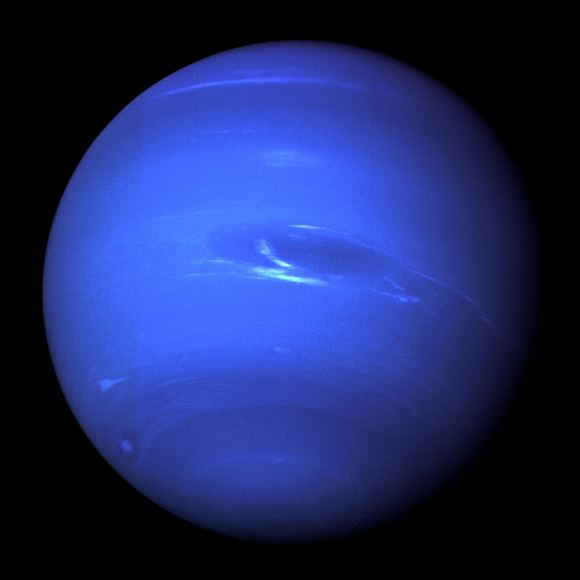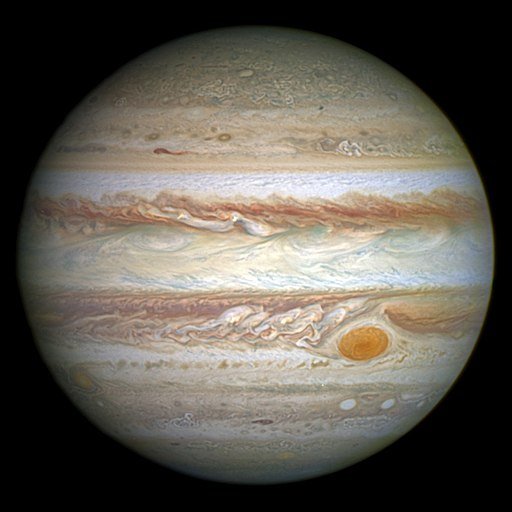NEPTUNE’S HUGE STORM IS SHRINKING AWAY IN NEW IMAGES FROM HUBBLE
Back in the late 1980's, Voyager 2 was the main rocket to catch pictures of the monster storms in Neptune's air. Before at that point, little was thought about the profound breezes burnning through Neptune's environment. Be that as it may, Hubble has been turning its sharp eye towards Neptune throughout the years to think about these tempests, and over the recent years, it's watched one colossal tempest dwindling of presence.
"It would seem that we're catching the end of this dim vortex, and it's unique in relation to what surely understood investigations drove us to anticipate." – Michael H. Wong, University of California at Berkeley.
When we consider storms on alternate planets in our Solar System, we consequently consider Jupiter. Jupiter's Great Red Spot is an apparatus in our Solar System, and has kept going 200 years or more. However, the tempests on Neptune are unique: they're transient.

Voyager 2 caught this picture of Neptune in 1982, when it was more than 7 million km (4.4 million miles) far from the planet. The Great Dark Spot amidst the picture was the primary tempest at any point seen on Neptune. Picture: By NASA (JPL picture) [Public domain], through Wikimedia Commons
The tempest on Neptune moves in a hostile to cyclonic bearing, and in the event that it were on Earth, it would traverse from Boston to Portugal. Neptune has a considerably more profound air than Earth—in actuality it's all climate—and this tempest raises material from somewhere inside. This allows researchers to think about the profundities of Neptune's air without sending a rocket there.
The primary inquiry confronting researchers is 'What is the tempest made of?' The best competitor is a substance called hydrogen sulfide (H2S). H2S is a poisonous substance that stinks like spoiled eggs. In any case, particles of H2S are not really dull, they're intelligent. Joshua Tollefson from the University of California at Berkeley, clarifies: "The particles themselves are still exceedingly intelligent; they are simply somewhat darker than the particles in the encompassing climate."
"We have no proof of how these vortices are framed or how quick they pivot." – Agustín Sánchez-Lavega, University of the Basque Country in Spain.
However, past think about what substance the spot may me made of, researchers don't know much else. "We have no proof of how these vortices are shaped or how quick they turn," said Agustín Sánchez-Lavega from the University of the Basque Country in Spain. "It is probably that they emerge from an unsteadiness in the sheared eastbound and westbound breezes."
There've been expectations about how storms on Neptune ought to carry on, in view of work done previously. The desire was that tempests like this would float toward the equator, at that point separate in a burst of action. Be that as it may, this dim tempest is alone way, and is opposing desires.
"We suspected that once the vortex got excessively near the equator, it would separate and maybe make a tremendous upheaval of cloud movement." – Michael H. Wong, University of California at Berkeley.
"It would appear that we're catching the end of this dull vortex, and it's not the same as what surely understood examinations drove us to expect," said Michael H. Wong of the University of California at Berkeley, alluding to work by Ray LeBeau (now at St. Louis University) and Tim Dowling's group at the University of Louisville. "Their dynamical reenactments said that anticyclones under Neptune's breeze shear would most likely float toward the equator. We felt that once the vortex got excessively near the equator, it would separate and maybe make a tremendous upheaval of cloud action."
As opposed to going out in some sort of striking burst of action, this tempest is simply blurring ceaselessly. What's more, it's likewise not floating toward the equator not surprisingly, but rather is advancing to the south post. Once more, the inescapable examination is with Jupiter's Great Red Spot (GRS).
The GRS is held set up by the noticeable tempest groups in Jupiter's air. What's more, those groups move in rotating headings, compelling the development of the GRS. Neptune doesn't have those groups, so it's believed that tempests on Neptune would tend to float to the equator, as opposed to toward the south shaft.

Jupiter's noticeable tempest, the Great Red Spot, is held set up by the substituting storm groups in Jupiter's air. Picture: By NASA, ESA, and A. Simon (Goddard Space Flight Center) [Public domain], through Wikimedia Commons
This isn't the first occasion when that Hubble has been watching out for Neptune's tempests. The Space Telescope has likewise taken a gander at storms on Neptune in 1994 and 1996. The video beneath recounts the tale of Hubble's tempest watching mission.
The pictures of Neptune's tempests are from the Hubble Outer Planets Atmosphere Legacy (OPAL) program. OPAL assembles long haul benchmark pictures of the external planets to enable us to comprehend the advancement and airs of the gas mammoths. Pictures of Jupiter, Saturn, Uranus and Neptune are being taken with an assortment of channels to shape a sort of time-slip by database of environmental action on the four gas planets.
Article reproduce by universetoday
Hi, I found some acronyms/abbreviations in this post. This is how they expand: